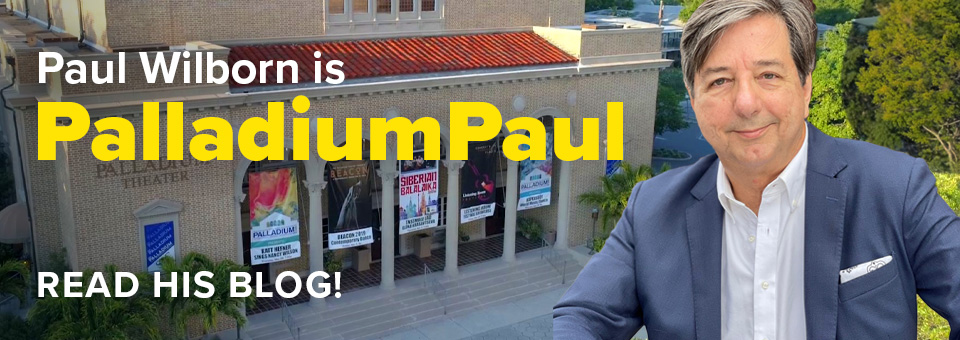Over the past few weeks I’ve been doing my job backed by an incredible live soundtrack – the score of Leonard Bernstein’s West Side Story. The orchestra, composed of some of the bay area’s best musicians, are rehearsing just upstairs from my office. I’m not sure what people think as I walk around St. Pete singing “I Feel Pretty.”
Working around all this great music is an incredible treat. And starting Friday, audiences will share my pleasure. A fully staged West Side Story, produced by St. Petersburg Opera, opens a six-show run at the Palladium.
West Side Story is a musical, not an opera. Or is it? Tampa Bay Times Staff Writer Stephanie Hayes explores that question in today’s Weekend section. You can read her entire story at:

Stefanie Izzo as Maria
Here’s an excerpt:
By Stephanie Hayes
shayes@tampabay.com
Maestro Mark Sforzini walked to the piano on a recent morning and played a series of notes in a steely, foreboding movement. Dun, dun, dunnnn. Ma-ri-aaaaaa. • “What does that interval make you feel?” he asked the crowd. • Suspense, they offered. Conflict. Dissonance. Tension. General ick.
Those notes, he explained at the St. Petersburg Opera Company‘s Mornings With the Maestro series at the Museum of Fine Arts, are the basis for West Side Story. The maestro was there to discuss the ins and outs of the opera’s next production.
Although Bernstein himself said he wanted to avoid falling into the “operatic trap” of indulgent singing over plot, there is no denying it: • “West Side Story is what I consider to be one of the most operatic musicals that exists,” Sforzini said. Here’s why:
Signature sound: You can hear West Side Story‘s tritone interval throughout, when the Jets first appear, in the mambo, when Tony first utters lovey-dovey words about Maria. The interval, filled with anxiety and instability, was once called the “devil’s interval” and forbidden in early church music. And it was never used in a Broadway musical before West Side Story. “To conceive an entire piece based on this interval was unheard of,” Sforzini said. “This was not done in Broadway. People didn’t have to sing these intervals.”

Gilad Paz as Tony
Casting: Talk about tough auditions. The actors need to dance. They need to act. They need to look somewhat right for the parts. And what’s more, the roles in West Side Story are assembled in the operatic tradition. That means the leading lady, Maria, is a soprano. Her supporting lady, Anita, is a mezzo-soprano. The leading man, Tony, is a tenor. The bad guys are the baritones and basses. And the two leads need to have a full operatic range of at least two octaves. No small potatoes.
Underscoring: Fun fact — not all operas have strictly sung dialogue, known as recitative. But some operas and musicals use a technique called underscoring, in which parts of dialogue are spoken over a soft accompaniment, designed to punch you right in the feels. The balcony scene in West Side Story? Underscoring like crazy.
Melodic battles: SPOILER ALERT. Tony kills Maria’s brother and everything gets real complicated. Maria and Anita sing A Boy Like That, a good example of operatic counterpoint — one part holds stagnant while the other moves. In other words, Anita is like, “Drop him like it’s hot,” and Maria is like, “No, he’s the best.” They finally come to terms and sing in unison, I Have A Love. We see the counterpoint, too, at the end of the first act when the cast sings individual motifs simultaneously. It’s Riff’s street high jinks and Anita’s sexy siren cry pitted against the backbone of Tonight. Can’t anyone get along?
Arias: Maria is an aria. Unlike the recitative, which advances the plot, an aria takes a step back to dwell on one thing. In this case, the mystique of the name Maria. A couplet: “Say it loud and there’s music playing. Say it soft and it’s almost like praying.” Also, there’s that eight-count high B-flat Tony hits, Sforzini pointed out, which is straight-up opera. All together, now: MARIAAAAAAAAA!
West Side Story: The St. Petersburg Opera Company production runs Friday through July 5 at the Palladium Theater, 253 Fifth Ave. N, St. Petersburg. $21.50-$64.50. For tickets visit www.mypalladium.org, or call 727 822-3590.








Leave a Reply